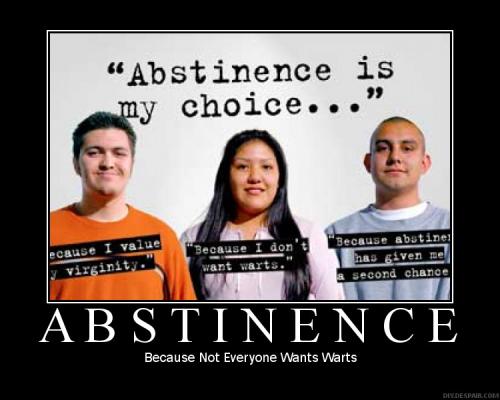 Earlier today, we looked at a couple of media treatments of that abstinence study. Both the Washington Post and Associated Press coverage we looked at were much better than this Los Angeles Times story. It's awful. Here's a sample:
Earlier today, we looked at a couple of media treatments of that abstinence study. Both the Washington Post and Associated Press coverage we looked at were much better than this Los Angeles Times story. It's awful. Here's a sample:
The George W. Bush administration poured tens of millions of dollars into federal funding for abstinence-only programs, most of them religious-oriented, with little or no evidence that they worked. And new data released last week showed that sexual activity, pregnancies and sexually transmitted diseases are increasing among teens.
What are reporters Thomas H. Maugh II and Shari Roan talking about? Have they even read the Bush administration guidelines for funding of abstinence programs? Or, for that matter, for funding of faith-based groups? Do they really believe that "most" of the Bush administration funds went to religious-oriented programs? Really? Now, I'm not saying that in the bloated bureaucracy that is the federal government that funds aren't misappropriated to religious charities that fail to follow the regulations for federal funds. (Indeed, the ACLU got Health and Human Services to agree to stop funding one group over concerns the funds were being allocated to a group whose program was, well, religiously oriented.) But if you believe that most federal funds for abstinence programs went to "religious-oriented" programs, you shouldn't be writing on this topic.
And that's not even mentioning the failure of this story to mention that non-abstinence programs receive the vast majority of federal funds for sex education. My previous post discussed how odd it is that studies showing the same rates of effectiveness for various sex ed programs are written up as failures for only one type of sex ed program (and it's always the abstinence program that gets blamed or framed as the curriculum that shouldn't be funded).
But what's also interesting is how differently the Los Angeles Times portrayed the effectiveness of other forms of sex education. It claimed that the other forms of sex education used (one that encouraged abstinence but taught about birth control and one that taught about birth control) were also tremendously effective:
Other forms of sex education also worked, however, reducing sexual activity by about 20% and reducing multiple sexual partners by about 40%, according to the study reported Monday in the Archives of Pediatrics and Adolescent Medicine.
It doesn't explain which forms of sex education were successful. But compare that with what the Associated Press said:
The students, mostly 12-year-olds, were assigned to one of four options: eight hour-long abstinence-only classes, safe-sex classes, classes incorporating both approaches; or classes in general healthy behavior, which served as a control group. Results for each class were compared with the control group.
Two years later, about one-third of abstinence-only students said they'd had sex since the classes ended, versus nearly half - about 49 percent - of the control group. Sexual activity rates in the other two groups didn't differ from the control group.
And the AP's statement even seems to conflict with what the Washington Post says:
Over the next two years, about 33 percent of the students who went through the abstinence program started having sex, compared with about 52 percent who were taught only safe sex. About 42 percent of the students who went through the comprehensive program started having sex, and about 47 percent of those who learned about other ways to be healthy did.
If 42 percent of the students who learned about "safe sex" and abstinence had sex while 52 percent who learned solely about how to have "safe sex," that seems noteworthy.
I don't have access to the full study but these three summaries all seem to say different things. Either the other sex ed programs showed worse results than the control group, the same results as the control group or better results than the control group. That's not hard to make happen when dealing with statistics but it does make you wonder about how studies are presented by the media.
